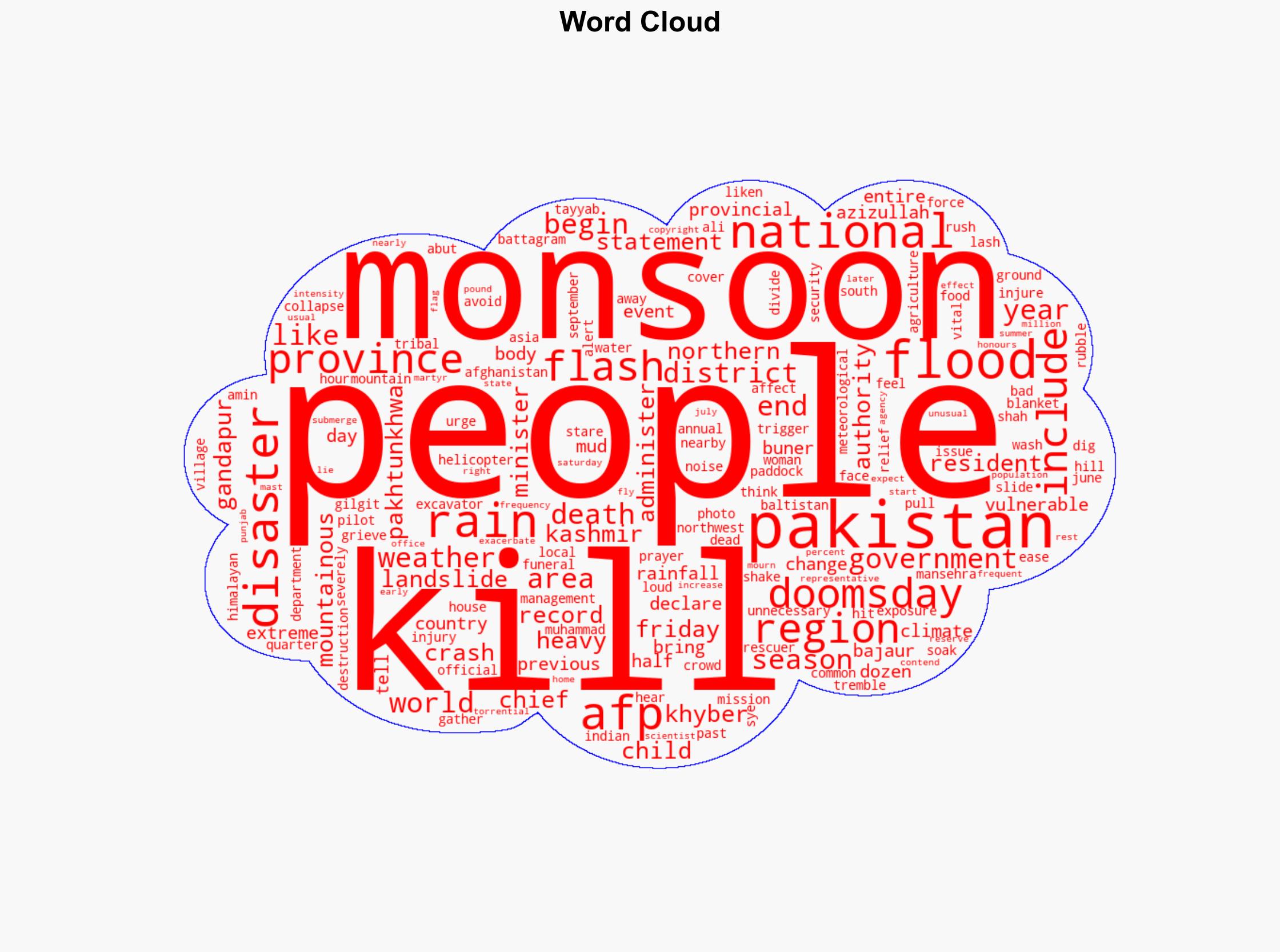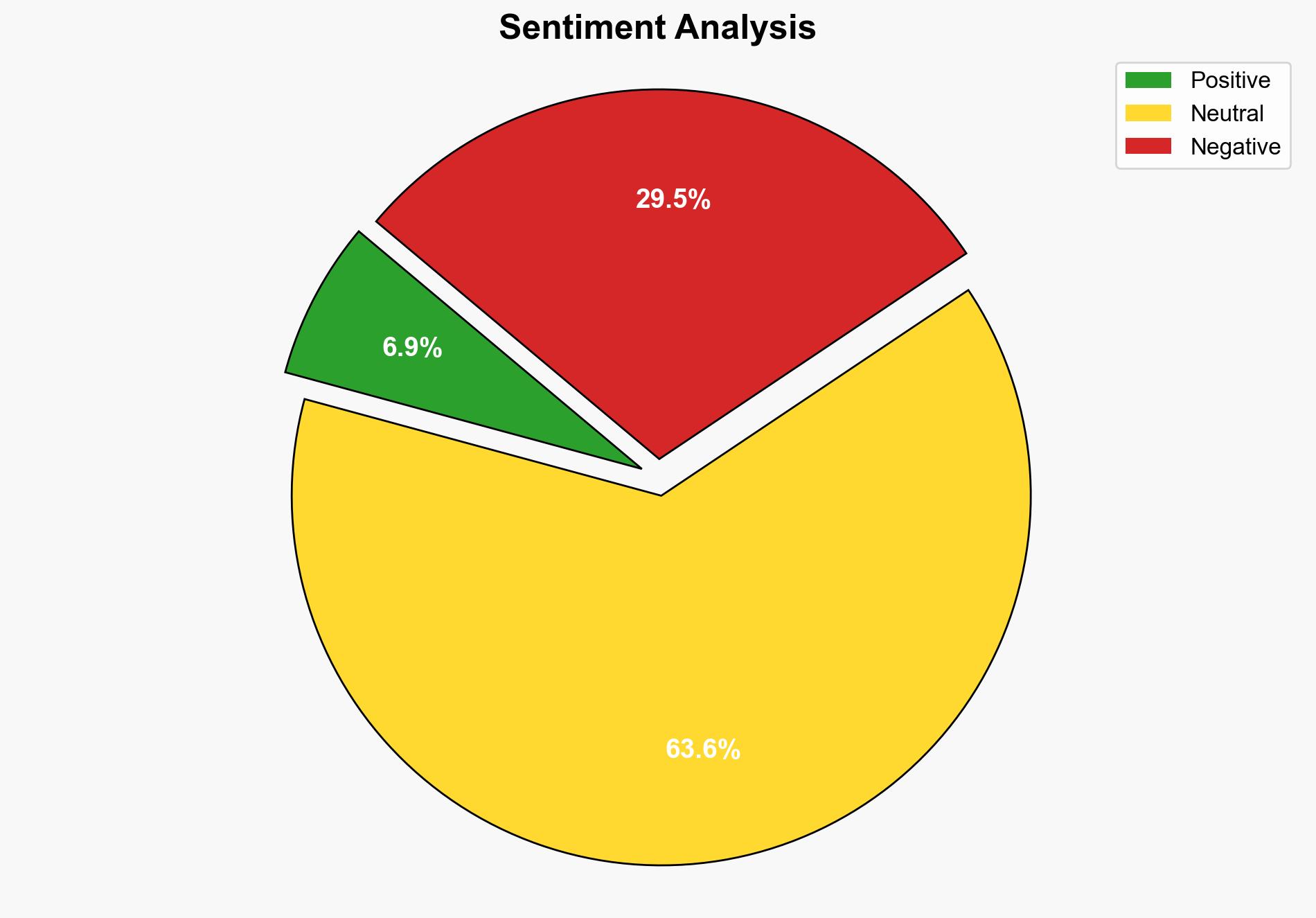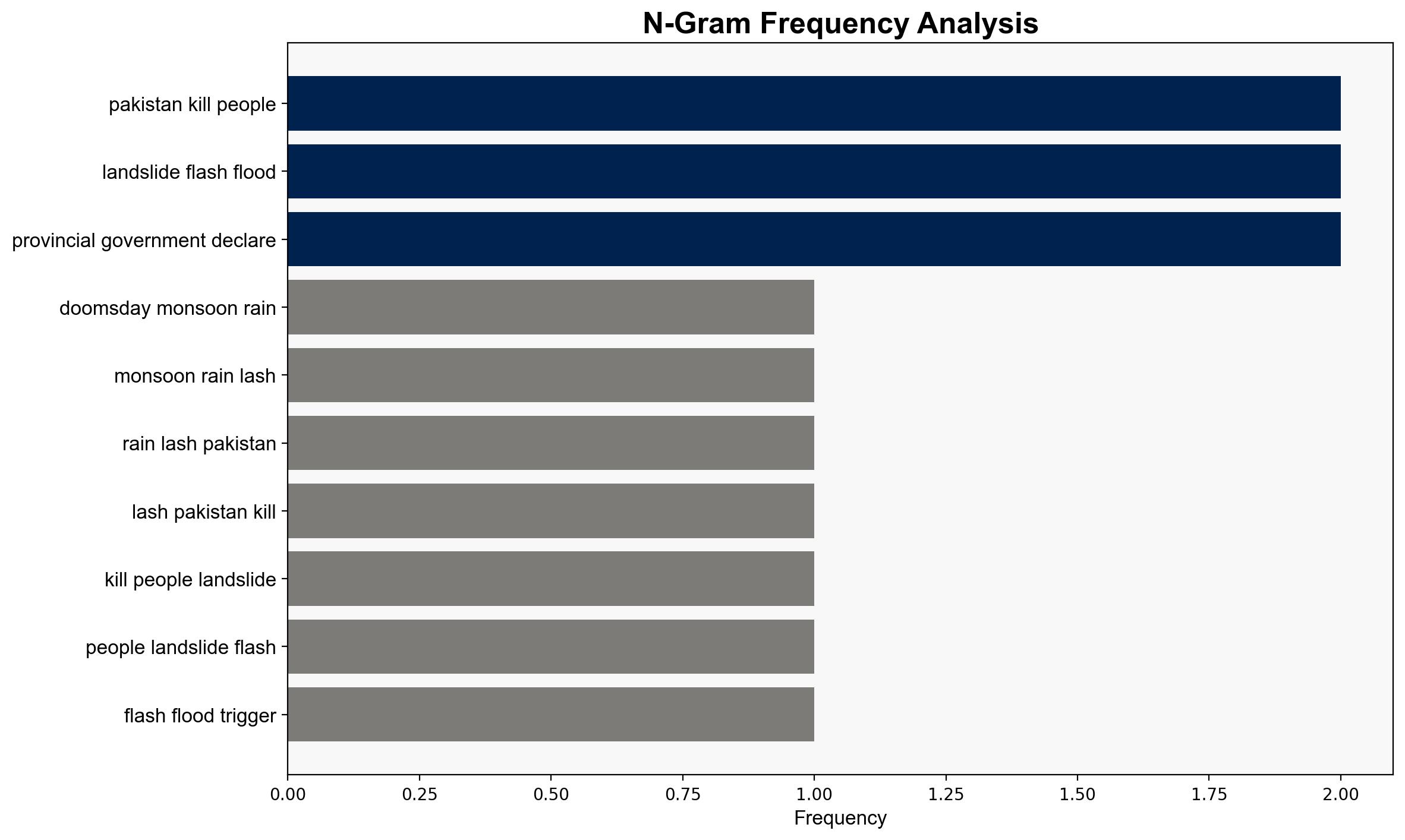‘Doomsday’ Monsoon Rains Lash Pakistan Killing Almost 200 People – International Business Times
Published on: 2025-08-15
Intelligence Report: ‘Doomsday’ Monsoon Rains Lash Pakistan Killing Almost 200 People – International Business Times
1. BLUF (Bottom Line Up Front)
The monsoon rains in Pakistan have resulted in significant casualties and infrastructure damage, highlighting the country’s vulnerability to climate change-induced extreme weather events. The most supported hypothesis is that climate change is exacerbating the intensity and frequency of monsoon rains, leading to increased disaster risks. Confidence Level: High. Recommended action includes enhancing disaster preparedness and climate adaptation strategies.
2. Competing Hypotheses
1. **Hypothesis 1**: The increased intensity and frequency of monsoon rains in Pakistan are primarily due to climate change, which is causing more extreme weather patterns globally.
2. **Hypothesis 2**: The current monsoon devastation is primarily due to inadequate infrastructure and poor disaster management, rather than being significantly influenced by climate change.
Using ACH 2.0, Hypothesis 1 is better supported by the evidence of global patterns of increased extreme weather events linked to climate change. The early onset and prolonged duration of the monsoon season, as reported, align with climate change models predicting such shifts.
3. Key Assumptions and Red Flags
– **Assumptions**: Hypothesis 1 assumes that climate change is the primary driver of weather anomalies, while Hypothesis 2 assumes that human factors like infrastructure and management are the main contributors.
– **Red Flags**: Lack of specific data on infrastructure resilience and disaster management effectiveness. Potential bias in attributing all weather anomalies to climate change without considering local factors.
4. Implications and Strategic Risks
The increased frequency of extreme weather events poses significant risks to Pakistan’s economic stability, food security, and public safety. The potential for cascading effects includes displacement of populations, increased strain on government resources, and heightened geopolitical tensions with neighboring regions affected by similar weather patterns. The psychological impact on the population could lead to decreased trust in government capabilities.
5. Recommendations and Outlook
- Enhance early warning systems and community-based disaster preparedness programs.
- Invest in resilient infrastructure and climate adaptation projects.
- Scenario Projections:
- Best Case: Improved infrastructure and preparedness reduce future casualties and economic losses.
- Worst Case: Continued extreme weather events lead to severe economic and humanitarian crises.
- Most Likely: Incremental improvements in disaster management mitigate some risks, but challenges persist.
6. Key Individuals and Entities
– Ali Amin Gandapur
– Sye Muhammad Tayyab Shah
7. Thematic Tags
national security threats, climate change, disaster management, regional focus





